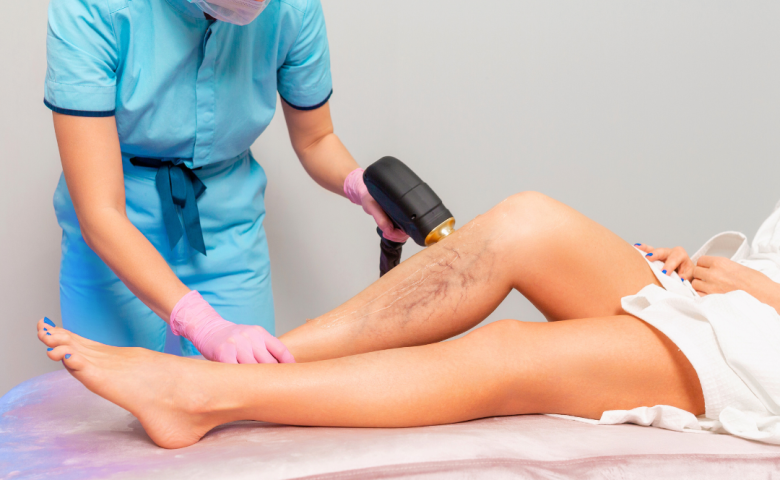Don’t Let Chronic Joint Pain Hold You Back. Discover Non-Invasive Relief at Prospero Vascular & Interventional

Chronic Joint Pain Doesn’t Have to Win
Chronic joint pain due to osteoarthritis isn’t just an inconvenience—it can become a daily barrier to the life you love. Whether you’re dealing with painful knees, or frozen shoulder, osteoarthritis can turn simple pleasures—like walking the dog or tending your garden—into painful tasks.
If you’re in the Bay Area and struggling with long stanging joint pain that interferes with your routine or keeps you from your favorite activities, now is the time to explore effective solutions. At Prospero Vascular and Interventional, we specialize in advanced, non-surgical treatments designed to reduce pain and restore mobility—without the need for major procedures or prolonged recovery.
Understanding Chronic Joint Pain: What’s Behind the Discomfort
Joints are essential for movement—connecting bones, absorbing impact, and keeping you in motion. But over time, wear and tear from aging, repetitive use, or injury can lead to inflammation, cartilage breakdown, and tissue damage, resulting in chronic pain.
Common causes include:
- Osteoarthritis – Degeneration of joint cartilage, leading to bone-on-bone contact
- Tendonitis or Bursitis – Inflammation in the tendons or fluid-filled sacs around joints
- Injury or Overuse – Repetitive motion or past injuries that continue to affect mobility
Although joint pain is more common with age, it shouldn’t be accepted as a normal part of life. Identifying when pain becomes chronic is key to preventing long-term complications.
Recognizing the Signs: When to Seek Help
If you’ve been diagnosed with osteoarthritis or frozen shoulder, and experiencing any of the following symptoms, it may be time to consult a specialist:
- Knee pain while getting up from a seated or crouching position
- Morning stiffness or stiffness after inactivity
- Difficulty with bearing weight and movement or greatly reduced range of motion
- Inability to reach far above the head due to pain
- Grinding or clicking during motion
- Pain that disrupts sleep or daily activities
These symptoms don’t just impact physical health—they can affect your lifestyle, independence, and overall well-being. Early intervention can make all the difference.
The Emotional and Lifestyle Impact of Chronic Joint Pain
Chronic joint pain is more than just a physical condition. It can affect your confidence, independence, and emotional health. Many patients worry about losing mobility, relying on others for everyday tasks, or giving up activities they once enjoyed.
Concerns about dependency on medications or the risks and downtime associated with joint replacement surgery can also add stress. Fortunately, at Prospero VI, there are non-invasive alternatives that address the source of your pain and restore function—without surgery.
Don’t Wait: Why Early Treatment Matters
Left untreated, chronic joint pain can worsen over time, leading to reduced mobility, muscle atrophy, or permanent joint damage. Addressing pain early improves outcomes and can help you avoid more invasive interventions down the line.
At Prospero Vascular, we focus on precision-based, image-guided treatments that relieve pain at its source—so you can get back to the activities you love, with confidence.
Advanced, Non-Surgical Joint Pain Treatments at Prospero VI
Our interventional specialist team provides leading-edge, non-invasive therapies tailored to your needs and lifestyle. These treatments are performed on an outpatient basis with minimal downtime and excellent long-term outcomes.
Genicular Artery Embolization (GAE): A Breakthrough in Chronic Knee Pain Relief
Especially effective for knee osteoarthritis, GAE is a minimally invasive procedure that reduces inflammation and pain without the need for surgery.
How it works:
- A tiny catheter is inserted through a small incision, often in the wrist or groin
- Using real-time imaging, the catheter is guided to the genicular arteries that supply the inflamed joint
- Microsphere particles are injected to block abnormal blood flow, reducing inflammation and pain
- The procedure is performed under local anesthesia and patients typically return to normal activity within days
GAE offers long-lasting relief for over 80% of patients, making it an ideal solution for those seeking alternatives to surgery or who haven’t found success with medications or injections.
Adhesive Capsulitis Embolization (ACE): A Breakthrough in Frozen Shoulder Pain Relief
Adhesive Capsulitis Embolization (ACE) involves the use of image-guided embolization techniques to selectively occlude blood vessels around the shoulder joint. This targeted approach aims to reduce inflammation and improve joint mobility by decreasing the blood supply to the inflamed capsule.
How Is the Procedure Performed?
- Pre-Procedure Imaging: The interventional radiologist conducts a thorough assessment using imaging techniques to identify the specific blood vessels supplying the inflamed shoulder capsule.Akron Children’s+4Wikipedia+4Wikipedia+4
- Catheter Insertion: Under local anesthesia and fluoroscopic guidance, a catheter is inserted through a small incision, typically in the groin or arm, and navigated to the targeted blood vessels.
- Embolization: Embolic agents, such as microcoils or particles, are delivered through the catheter to occlude the identified vessels, thereby reducing blood flow to the inflamed areas.
- Post-Procedure Care: The patient is monitored for a short period before being discharged. Recovery time is generally minimal, with many patients experiencing significant pain relief and improved shoulder function within weeks.Akron Children’s+2UCSF Benioff Children’s Hospitals | Home+2Wikipedia+2
Benefits of ACE
- Minimally Invasive: The procedure is performed through a small incision, reducing recovery time and minimizing surgical risks.
- Targeted Treatment: By focusing on the blood vessels supplying the inflamed joint capsule, ACE directly addresses the source of inflammation.
- Effective for Resistant Cases: ACE is particularly beneficial for patients whose symptoms persist despite physical therapy and other non-surgical interventions.
What to Expect During Recovery
Recovery from non-invasive procedures like GAE is typically quick and manageable. Most patients experience only mild discomfort at the incision site and can resume light activity within a few days. Pain relief often begins within the first week and continues to improve over time.
Many patients return to daily routines the same day.
Why Patients Choose PVI
At PVI, we’re redefining joint pain care in the East Bay by offering alternatives to traditional surgery with the following advantages:
- Experienced Specialists – Our interventional radiologist is a leader in image-guided procedures
- Minimally Invasive Focus – We prioritize comfort, low risk, and fast recovery
- Convenient Location – Accessible care across the East Bay
- Compassionate, Personalized Care – We take the time to listen and tailor each treatment to your specific goals and needs
Take the First Step Toward Relief
Chronic joint pain doesn’t have to limit your lifestyle. With innovative, non-invasive options available at Prospero Vascular, relief is within reach—without the need for surgery.
Call (510) 977-8466 to schedule your consultation today and discover how we can help you move better, feel better, and live better.
Move Better. Feel Better. Live Better.
Prospero VI – Restoring Mobility, One Patient at a Time.




